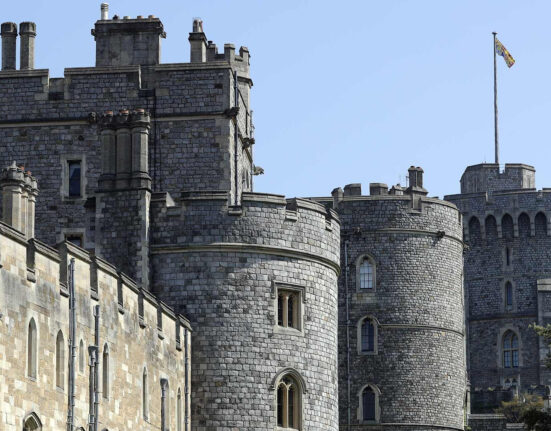9th July 2021 ‘The Mail Online
A pint of beer was two shillings, the Beatles dominated the charts, only 4% of people went to university and a house cost less than £3,000: How 1966’s England was a VERY different place to 2021
- England won the World Cup for the first and only time in July 1966
- Princess Margaret drew huge crowds during her tour of the US a year earlier
- Ownership of fridges, washing machines, cars and televisions was increasing
It was the year of footballing glory, when the Beatles were topping the charts and only four per cent of young people went to university.The Britain of 1966 was a very different place to how it is today. Some newspapers didn’t make England winning the World Cup for the first and only time their top story.
But the event was watched by a record 32million people despite many Britons not owning television sets.It was the year of footballing glory, when the Beatles were topping the charts and only four per cent of young people went to university. The Britain of 1966 was a very different place to how it is today
But the Swinging Sixties were in full swing, the sexiest man alive was Clint Eastwood and The Beatles were about to take the US by storm.
Princess Margaret had set ordinary pulses racing and royal gatekeepers’ minds worrying with her antics during her tour of the US a year earlier.
The Aberfan disaster in rural Wales – in which 116 children and 28 adults were killed when a coal mine spoil tip collapsed – wracked the national consciousness.
And the rocketing ownership of fridges, washing machines, cars and televisions was changing the nature of domestic life.
In 1966, the average Briton took home just £798 per year as their salary – equivalent to around £13,970 in today’s money.
Britain was still recovering economically from World Two and was presiding over a gradually declining empire, with Barbados gaining independence in October 1966.
Labour’s Harold Wilson was Prime Minister and he was struggling to balance his public spending ambitions with a £400m budget deficit that was a legacy of the UK’s wartime debts – much of it to the US.
Wilson would eventually bow to pressure and devalue the pound by 15 per cent in 1967 and that year Britain’s application to join the fledgling European Economic Community was rejected by French President Charles De Gaulle.
People’s relatively low income is reflected in the average house price of just £3,465 – or £60,638 in today’s money – compared to £251,000 now.
And the price of a food shop was low too, averaging out at just £1.01 compared to a massive £63.70 today.
In the 60s, a loaf of bread cost £0.07 while a pint of milk was £0.16.
Whilst one is owned by nearly every Briton now, it wasn’t until near the end of the 1960s that fridges really became popular.
In 1948, only around two per cent of households had a fridge, but that had soared to 58 per cent by 1970s.
Referred to in adverts as ‘every woman’s best friend’, they eliminated the need for daily trips to the shops and opened up a wider range of products to consumers.
Other ‘white’ good were also becoming more common.
By 1971, 70 per cent of households had a washing machine, although given the rapid pace of change in the era, that figure would have been lower in 1966.
A packet of cigarettes cost only five shillings – or 25p – equivalent to £13.35 today and the UK was still four years from decimalisation in 1971.
The cost of a car in 1966 was £950, more than a year’s salary, meaning far fewer people owned one. Instead, commuters opted to take buses or walk instead of driving.
But those who did choose to drive were treated to low fuel prices, with the average litre of fuel costing just 6p, compared to £1.30 now.
Nowadays, however, the average price for a new car is £33,559 – with millions of Britons opting to buy second-hand to cut costs.
EDUCATION
Only 4 per cent of school leavers went to university in the 1960s, but those numbers were climbing along with the number of universities in the UK under Harold Wilson’s modernisation agenda.
In the 60s decade, the number of university students more than doubled, from about 200,000 to around 430,000.
But, to put this in context, there are now around 1.8 million students in university at undergraduate level alone.
Meanwhile, baby boomers – children born after World War II – filled seats in primary and secondary schools.
Class sizes hit 30, with teachers using strict discipline to keep youngsters in line.
Corporal punishment was often favoured, including using a ruler to hit kids over the knuckles, on the buttocks or on the palm of the hand.
The ‘Three Rs’ – reading, writing and arithmetic – were central to the curriculum.
Homework involved learning poet Wordworth’s ‘I wandered lonely as a cloud’ off by heart while in lessons, and times tables would be chanted out loud.
MEDIA
The 1966 World Cup Final remains the most watched television event in Britain, despite the relative scarcity of TV sets in the UK.
Thirty-two million and three hundred thousand people watched England beat Germany 4-2, even though only 15million homes had television to watch it on. The next most watched event was Princess Diana’s funeral with 32.1m viewers.
The majority watched the final in black and white, but BBC channels were available for those few who had colour sets.
And most Britons primarily got their news from radio and newspapers, which often gave football much less coverage than could be expected today.
While the triumph made the front page of both the Sunday Telegraph, and Observer the photograph of Bobby Moore lifting the trophy was very small and many other stories were given prominence.
In the Sunday Telegraph England’s triumph did not even make the lead story.
The Evening Standard, on the other hand, did put England’s win on the cover- with a picture of Bobby Moore holding up the cup dominating the front page.
But the win gets just a column of text, before telling readers to turn to pages 12, 13, and 24 for more coverage.
The Sunday Mirror also put the football on its front page, with a picture of the players waving to their fans from a balcony.
The bestselling newspaper – the tabloid Daily Mirror – had a circulation of just over five million, followed by the Daily Express on just under four million.
The Daily Mail sold around 2.3million copies a day, ahead of The Sun, which was shifting just under 1.3million copies.
Three years later, the outlet was purchased by Australian media baron Rupert Murdoch, who transformed its style and reader base.
The broadsheet Daily Telegraph sold around 1.3million copies, far ahead of its main rival The Times, which is selling less than 300,000 papers a day.
Labour’s Harold Wilson had been Prime Minister since 1964, and had just won a landslide at the March 1966 general election.
He was attempting to transform Britain’s economy though the ‘white heat of the technological revolution’ but the economy was crippled by the declining empire and London’s wartime debts.
Wilson supported the liberalisation of society including changing laws on censorship, divorce, abortion, and homosexuality, and abolishing capital punishment.









